All requests are subject to allocation.
Invoicing will be upon confirmation.
Delivery 2nd half October 2024 or when the weather is wine kind.
The 2024 Release at Gaja
A mix of very strong vintages for each of the appellations. As always it’s what’s in the glass that counts. Available reviews are included below.
Gaja – Piedmont
2026 Gaja Rossj-Bass Chardonnay
2022 Gaja Gaia & Rey Chardonnay
2022 Gaja Sito Moresco ~ Nebbiolo, Barbera, Cabernet Sauvignon, Merlot
2020 Gaja Dagromis Barolo
2021 Gaja Barbaresco
Single Vineyard Wines – Price on Request
2020 Gaja Costa Russi Barbaresco
2020 Gaja Costa Russi Barbaresco 150cl Magnum
2020 Gaja Sori Tildin Barbaresco
2020 Gaja Sori San Lorenzo Barbaresco
2019 Gaja Conteisa Barolo
2019 Gaja Sperss Barolo
Ca’Marcanda – Bolgheri
2023 Ca’Marcanda Vistamare Vermentino Toscana IGP
2022 Ca’Marcanda Promis Toscana IGP (Merlot, Syrah,Sangiovese)
2022 Ca’Marcanda Magari Bolgheri DOP (Cabernet Franc, Cabernet Sauvignon, Petit Verdot)
2021 Ca’Marcanda Camarcanda Bolgheri DOP (Cabernet Sauvignon, Cabernet Franc)
Pieve Santa Restituta – Brunello
2019 Pieve Santa Restituta Brunello di Montalcino
2019 Pieve Santa Restituta Brunello di Montalcino 150cl Magnum
2019 Pieve Santa Restituta Rennina Brunello di Montalcino
2019 Pieve Santa Restituta Sugarille Brunello di Montalcino
IDDA – Etna
2023 Idda Bianco Sicilia DOP
2022 Idda Etna Rosso Sicilia DOP

About Gaja
Here we focus on Gaja in Barbaresco. Below you’ll find details of their ventures in Bolgheri, Montalcino and Etna. They follow similar principals across region.
*The following is an extract of an article published in the Wine Bites Mag “An Afternoon with Gaia Gaja” which included much more on Gaja than on this page.
Gaja is at once both one of the world’s wine icons and a controversial winery bucking “traditional wisdom” often being the trend setter rather than the follower. For me, it’s a sign that the Gaja’s have passion, focus, and, that they are pushing the boundaries.

I’ve been fortunate to devour Gaja’s wines from over 5 decades of production. One thing has been clear, they are evolving and pushing to make the best wines they can. This evolution has not been insulated from changes in the wine world. Historically, across the world’s greatest wine regions, think Barolo, Barbaresco, Burgundy, Tuscany, traditional winemaking has been interrupted by curiosity with the potential of new world winemaking techniques. Gaja has not been immune from this trend, use of high levels of new oak has being the most obvious example. Something I’m glad to say has been tempered in recent times.
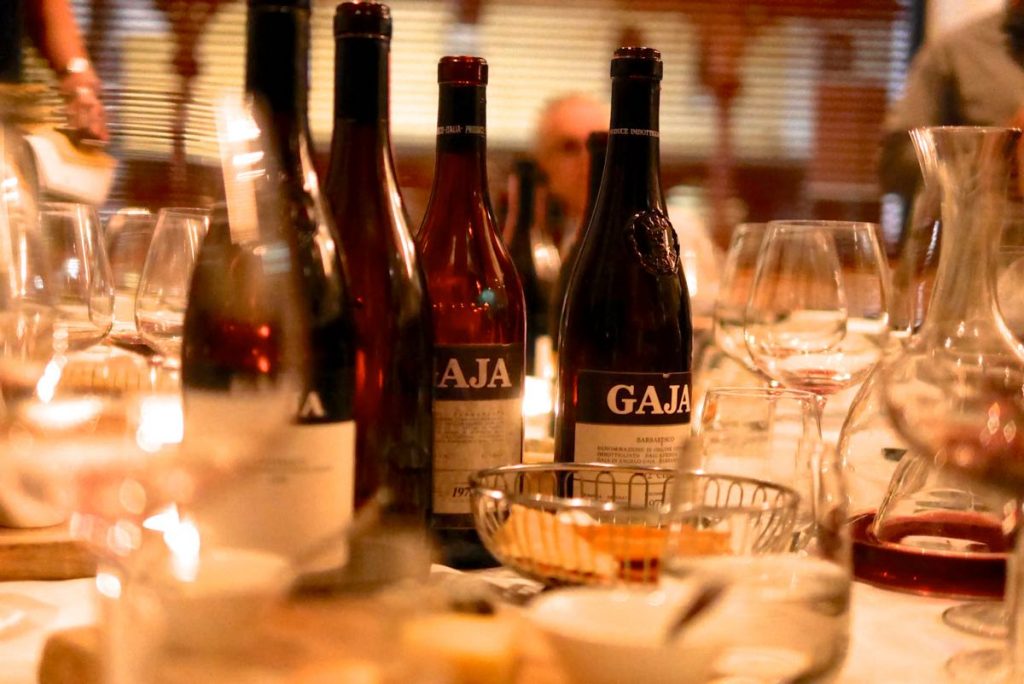
The film & podcasts with Gaia and Angelo below provide exception insight into the past, present and future of Gaja.
History
Gaja has a long history stretching back to it’s very beginnings in 1859. The transformation from a largely unknown winery in a region, not valued by consumers to one of the world’s most famous wineries in a very special region certainly didn’t happen overnight.
Gaia Gaja shared with us the history of Barbaresco, the Gaja winery, the challenge of establishing recognition for the region and what the future holds. One thing is certain, the Gaja’s aren’t afraid of pushing against the rules, some rules are meant to be broken. They have had to declassify their Barbaresco from DOCG status simply because the rules don’t fit what they believe is the best way to make their wine. With a nifty slight of tongue, Gaia, refers to this as a reclassification. A simple example being that they tend to pick early before the permitted time for a DOCG to pick. Why because higher vine density, lower yield per vine, flavour ripeness earlier, better natural acid etc. If they waited they could have DOCG, but, they would not be giving their fruit the best opportunity to shine.
What Separates Exceptional Wineries?
When you look at the great wine producers of the world they often have many things in common. Two of those being passion and continuity.
Passion just makes sense. Continuity well that’s a challenge. Good vignerons are always looking at their wines and vineyards, trying to make them yummier, healthier, more balanced, often by doing less, but, doing it better. Having the knowledge of the past, interrogating trends to find often simple ways to improve is critical. Seeing a vineyard in cool years, hot years, observing the little patch of vineyard that is not performing and nurturing it. Some wineries employ precision agriculture with high-tech imaging of vineyards, others, the eyes of trusted colleagues who have worked with them for decades. These eyes come to know each site, each vine and tend to them like they would a child. This philosophy has given them an intimate understanding of their terroir.
This is precisely the reason Gaja only employ permanent staff. Like many of the world’s great estates Gaja shifted from buying fruit to supplement production to buying and controlling great sites. In the early years as the Gaja Estate expanded, they were forced to purchase old run down houses with vineyards. Over time these have been restored and are now offered rent free to their staff.

The Challenges for the Future
There’s one trend that everyone in the wine world has had to address recently. Every time I catch up with a grape grower or winemaker I always ask what are you working on. Increasingly the response is “Managing climate change”.
Gaia explains the impact of climate change as helping them achieve greater consistency from year to year. The challenge being resultant higher alcohol and pH, with lower acids, fuller riper wines. Now instead of worrying about getting fruit ripe, they worry about sugar accumulation racing ahead of flavour and tannin development producing out of balance wine. On the upside it has opened up opportunities, the grape bunch stalks are now ripening allowing their incorporation into wine, adding tannin, spice and perfume.
The focus has been on rebalancing in the vineyard to meet this challenge. They’ve put money behind their beliefs and are adapting to change by experimenting. They’ve hired half a entomologists (insect gurus) & horticulturist (plant gurus and more) seeking to disrupt their thinking. Not necessarily taking direction from them, but, pushing themselves to use this knowledge combined with their wisdom, gleaned from over 150 years of tending the land to develop their own approach.
Biodiversity – Flowers, Bees, Trees
Looking after soil health, moisture levels and temperature
They have replaced direct fertilising using manures, with composting. Composting stalks, vine cuttings, used grape skins and manures allows the worms they’ve imported from America to further process organic waste and add nutrients through their microflora. An approach that has been used world wide with success. Just like your very own garden they’re mulching to cover crops to insulate the soil from the heat of the sun and retain moisture.
They’re looking to take a natural, yet, pragmatic. Considering technology, balanced with minimal intervention. Perhaps one of the most radical changes at least in terms of effort has been changing the row orientation at some sites in order to reduce direct impact of sun on the vines.
My lasting thought was that it takes time for a vigneron to understand their sites. Sometimes it takes just as long to convince the consumer of what the vigneron is trying to achieve.
In the Winery
Gaja is not a winery to stand still. Although we don’t have details of all of the winemaking, experience tasting 5 decades of Barbaresco in 1 sitting showed just how much has changed. Between the 1967 and 2011 vintage there were 4 clear phases.
The 1st Evolution … Old School 1960’s & 1970’s. These were the rustic wines, wines that were often driven by searing acidity and refined natural grape tannin. They were some of the best wines of the night.
The 2nd Evolution … Chewing on Trees! The oaky ones! A regression for me, included the 1987, 1994, 1996, 1998 and 1999.
The 3rd Evolution … Going OTT! 2004 & 2006. 2004 saw a shift to more restrained coffee / mocha oak. 2006 was an outlier, an overblown, OTT, oaf, clumsy, high alcohol wine.
The 4th Evolution … Balance & Restraint! The lastest evolution, the 2011 finally saw the balance I was looking for! The hallmark searing acidity, backed by a core of fresh fruit and balance oak & grape tannin. This has been the direction the Barbaresco has been maintaining.
In short you can be certain Gaja will always be looking to evolve and improve. Judge them in the best way, through the contents of a glass over the technical details.
When the wines are on song they are something special. I have a 1974 Barbaresco waiting to be devoured!
Where in the World is Gaja?
Gaja has holdings in Barbaresco with Cantina Gaja, Barolo, Brunello di Montalcino with Cantina Pieve S. Restituta, in Bolgheri with Cantina Ca’Marcanda, and, now on the slopes of Mount Etna in a JV with Graci. Their home will always be Barbaresco.
About the Wines
Whites
2023 Gaja Rossj-Bass Chardonnay
Named for Angelo Gaja’s youngest daughter Rossana (Rossj)
Grapes: 90% Chardonnay, 10% Sauvignon Blanc
Region/Appellation: Langhe D.O.P sourced from Barbaresco & Serralunga
Winemaking: Steel fermentation and aging in oak for six months.
The ‘historical’ vineyards that remain the core (at present) of Rossj-Bass are situated predominantly in the Barbaresco commune – Cru’s of Pozzo, Bricco & Faset alongside a vineyard in neighbouring Treiso commune in the Pajore Cru. There are also three historical vineyards in the South West as the crow flies from Barbaresco in Serralunga d’Alba, named sites of Feja & Vivaldo 1 e 2.
However it’s perhaps Gaja’s new ‘project in Langhe Alta that we should shine a light on to better understand their vision for the future of their whites in the region. With the increasing average temperatures of Barbaresco they began searching for a new potential site to plant white varietals. This came to fruition in the form of some abandoned vineyards with amazing potential sitting at 650 metres above sea level in the Alta Langhe zone, situated SE of the Barbaresco zone, around the communes of Trezzo, Mango and Borgomale. Planting began of predominantly Chardonnay & Sauvignon Blanc retaining the natural unique shape of the existing terracing.
Adding to the site a brand new winery built specifically for them to vinify all their white wines. Full production of all whites began here from the 2023 vintage.
Rossj-Bass is predominantly Chardonnay with a touch of Sauvignon Blanc. The Alta Langhe component at present only represents a small portion of the overall blend due to the youth of the vineyards but this component will expand as the vines mature.
2022 Gaja Gaia & Rey Chardonnay
Legendary long lived Chardonnay named for Gaia Gaja and her grandmother, Clothilde Rey.
Grapes: 100% Chardonnay
A wine that perhaps needs no formal introduction but most certainly deserves one, especially if you are just starting your vinous journey with Gaja. Arguably Italy’s most iconic Chardonnay and at the time of creation a very controversial one when it was first released in 1983. Planting Chardonnay within in the boundaries of Barbaresco DOCG in Treiso was unthinkable yet now most would acknowledge it was just one of several innovative thoughts/ideas from Angelo Gaja that challenged the traditions of the region and cemented the estate as one of the greatest producers of Italy if not fine wine globally.
Named after Lucia and Angelo Gaja’s daughter, Gaia Gaja and Angelo Gaja’s grandmother Clotilde Rey.
Gaia & Rey Chardonnay is produced from two separated vineyards in the Langhe district: Giacosa planted in 1979 in Treiso and Rivettte in Serralunga d’Alba planted in 1989. Total of approximately 5.5 hectares planted specifically with Chardonnay between these vineyards for Gaia & Rey.
At present the wine continues to be 100% from these two sites but with the recently planting of Chardonnay in the Langhe Alta by Gaja it’s expected as these vines mature a component will be included from these higher altitude vineyards. From the 2023 vintage this wine will be solely made at the new winery in the Langhe Alta which Gaja has built specifically for the pursuit of producing their white wines.
100% fermented in barrel and the wine goes through full malolactic. 6 to 8 months elevage in barrel.
Reds
2022 Gaja Sito Moresco
Taking its name from that of the original vineyard.
Grapes: Nebbiolo, Barbera, Cabernet Sauvignon,Merlot
Region/Appellation: Mainly Pajorè in Treiso, Barbaresco & Serralunga, Barolo
Winemaking: Fermented and aged in stainless steel tanks and oak casks.
This wine has evolved it’s blend of varieties to just Nebbiolo & Barbera which has happened as a consequence of Gaja’s decision to revert their iconic single vineyard Barbaresco’s of Sori San Lorenzo, Sori Tilden and Costa Russi back to 100% Nebbiolo. This has however ‘free’d up’ some wonderful old vine Barbera that was previously being blended into these wines and is now part of the Sito Moresco bottling.
Most of the fruit comes from Pajore in Treiso and vineyards in Serralunga. 60% Nebbiolo, 40% Barbera.
The Nebbiolo and Barbera components are fermented separately plot by plot. Fermented in a mix of tank and oak then blended in oak in oak for 12 months.
2020 Gaja Dagromis Barolo
Taking its name from the Gromis family, an expression of two great terroirs of Barolo.
Grapes: 100% Nebbiolo
Region/Appellation: Serralunga & La Morra
Winemaking: The grapes from each single vineyard are fermented, macerated and aged for 12 months completely separately. They are then blended and further aged in oak for another 18 months.
Dagromis Barolo is a blend of 7 different vineyards over the communes of La Morra and Serralunga d’Alba. Silio, Serra dei Turchi, Cerequio from La Morra & 4 from Serralunga: Rivette, Broglio, Margheria, Colombaio. There is a beautiful mosaic here of both vine age and terrior, ranging from vines planted in 1965 in Silio in La Morra on deep compact clay silt soils to Broglio in Serralunga where the soils are sandy, light & soft.
Each vineyard is fermented separately followed by maceration then aged in oak for 12 months, predominantly french oak. The differing sites are then blended and further aged in oak for another 18 months in Slovanian oak Botti.
2021 Gaja Barbaresco
The flagship wine of the Gaja family. Benchmark Nebbiolo blended from 14 vineyards.
Grapes: 100% Nebbiolo
Region/Appellation: 14 vineyards situated in the municipality of Barbaresco. The land, at a height between 250 and 330m above the sea level, covers a surface of 21.4 hectares. The plants are 40 years old on average.
Winemaking: The grapes, coming from each single vineyard, separately undergo fermentation, maceration and ageing in oak for 12 months. Then they are blended and further aged in oak for another 12 months.
Barbaresco. Rare is it in the modern wine world where just one producer within a region is so intrinsically linked to the name itself. Gaja’s innovation and bravery at a time when no-one really cared for Barbaresco has helped all boats rise with the tide in a region that was over shadowed by it’s bigger brother Barolo for generations.
Gaja’s Barbaresco is sourced from 14 different vineyards over the communes of Barbaresco and Treiso. The Barbaresco vineyards of Loreto, Castello, Masue’, Faset, Rocagliette, Roncaglie Vecchio, Roncaglie Nuovo, Bernino, Bricco, Trifolera, Valdrapp blended with the Treiso vineyards of Pajore’, Sotto, Pajore’ Sopra, Pajore’ Universita’.
The grapes are fermented separately plot by plot & aged separately for 12 months if French oak. The component parts are then blended then aged another 12 months in Slavonian oak botti.
Single Vineyard Wines – Price on Request
2020 Gaja Costa Russi Barbaresco
The 2020 Barbaresco Costa Russi is a classy, polished wine. Dark cherry, plum, mocha, new leather, licorice and lavender all take shape. As always, Costa Russi is the most supple and charming of the Gaja Barbarescos in the early going. Drin: 2027-2050
2020 Gaja Sori Tildin Barbaresco
The 2020 Barbaresco Sorì Tildin is a powerful, deep wine. Dark fruit, leather, spice, tobacco and incense saturate the palate. A Barbaresco of stature and brooding intensity, Sorì Tildin will need a number of years to be at its very best. The 2020 is an unusually somber, dark Sorì Tildin. 2027-2050
Antonio Galloni, Vinous
2020 Gaja Sori San Lorenzo Barbaresco
The 2020 Barbaresco Sorì San Lorenzo is ample and potent, with tons of mid-palate intensity and palate-staining resonance. Black cherry, plum, new leather, licorice, gravel and dried herbs abound. As is so often the case, Sorì San Lorenzo is the most inward. Drin: 2028-2050
2019 Gaja Conteisa Barolo
The 2019 Barolo Conteisa is stunning. A wine of grace, power and finesse, the 2019 is immediately captivating. Crushed flowers, cinnamon, red berry fruit and rose petal are all beautifully lifted, all wrapped by silky La Morra tannins that add to its finesse. Readers will find an exquisite Barolo endowed with tremendous class. The 2019 is just sublime. Drink 2026-2041
2019 Gaja Sperss Barolo
A wine of stature and breeding, the 2019 Barolo Sperss is pure Serralunga power. Dark toned fruit, lavender, licorice, gravel and crushed rocks soar from the glass. There is plenty of the brooding intensity and tannic heft that are such signatures, but the 2019 is also wonderfully refined. Drink 2027-2044
Ca’Marcanda – Bolgheri
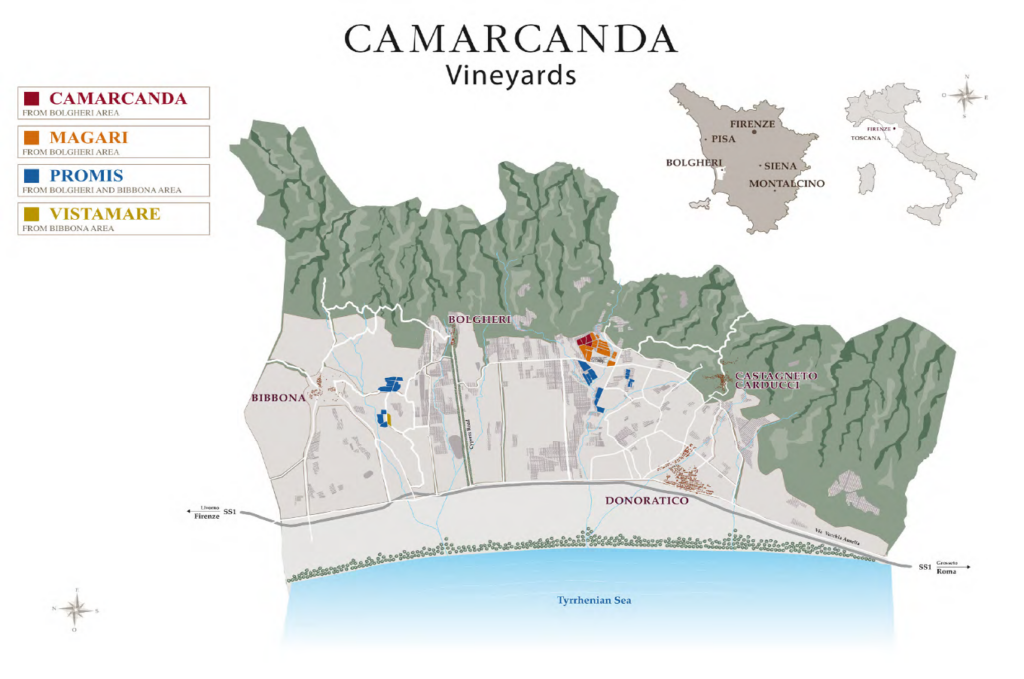
The Ca’Marcanda land was purchased in 1996 after a long search for the best terroir. It was chosen after extensive research using land zoning maps which isolated and pointed out the specific vine growing suitability of clay-limestone soils at the foot of the hills. To find land with their specific requirements they had to settle on a property not already planted to vineyards. After over 19 meetings with the previous owners the 70ha site was settled on at the end of 1996. The name Ca’Marcanda is derived from these protracted negotiations and is a term in the Piedmontese dialect that means ‘house of endless negotiations’ and specifically refers to the Tuscan peoples love of deal making. Vineyard planting started in 1997. In 2010 another 20ha was purchased in neighbouring Bibbona which now includes the white varieties planted specifically to produce the white wine Vistamare. The winery on the property began construction in 1998 and is built into the landscape with over 80% constructed underground.
THE TERROIR
Ca’Marcanda consists of two main soil types. Firstly white soils which are found higher up the slope towards the hills and are considered the best. These are categorised by being predominately limestone and clay. The clay is found in the top 30cm of the soil profile and then as you go deeper, limestone dominates. These white soils are degraded, shallow and low vigor soils. The second soil type, dark soils have a higher sand component and have been formed by alluvial wash coming down off the hills, deeper in profile with clay and iron oxide. These more fertile soils result in juicier wine with fruiter notes and higher concentration.
Giovanni Gaja really wanted to stress there are three main influences on the region. Firstly it is an area of light and this is a crucial factor that drives the climate here and therefore the wines. This light has two sources. The first source is the sun. Bolgheri is situated on the Mediterranean and experiences hot summers and mild winters. Rain is concentrated between April and May and then October and November. The second source is reflected light, both off the hills behind the region and the sea, the estate being only 5km from the sea. However even though it is hot and sunny there is constant mitigating cool winds coming down from the hills and warm winds coming up off the sea. These cool and warm winds mix, resulting in air that is never still which acts like an air-conditioner for the vineyards. This is the second major influence on the region. Finally, the third factor is the soils. The soils of Bolgheriare all marine limestones in origin. Only sites in Bolgheri that sat above 600m were above sea level until 14,000 years ago. In fact until the 1920’s much of the area was swamp land and only drained during that time under Mussolini. Today Bolgheri has 27 different soil types and counting.
THE JOURNEY OF BOLGHERI DOP
Until the current DOC regulations were laid down in 1994 Sassicaia and the other Super Tuscan wines produced here were usually sold as Vino da Tavola or Toscana IGT. Today a Bolgheri Rosso, Rosso Superiore or Rosé may be made entirely from Cabernet Sauvignon, Cabernet Franc, Merlot, or a blend combining one or more of these, and/or up to 50 percent of Syrah or Sangiovese. Other red grapes such as Petit Verdot may account for up to 30 percent. Wines made from other grape varieties or nonconforming blend percentages are classified as IGT. Earlier DOC regulations prevented monovarietal wines from being produced as Bolgheri Rosso. Today Ca’Marcanda produces two wines under the Bolghero DOC, Magari & Camarcanda. The other two wines are released under the Toscano IGP.
2023 Ca’Marcanda Vistamare Vermentino Toscana IGP
The only white wine produced at Ca’Marcanda is a blend of predominantly Vermentino at 70% then 20% Fiano and 10% Viognier. All varieties are vinified separately. The Vermentino is fermented in temperature controlled stainless steel tanks and the Viognier in barrel. Elevage is for 6 months then blended and bottled. The wine is actually classified as Toscana IGP as the Vistamare vineyard is found outside the Bolgheri DOC in neighbouring Bibbona. The name Vistamare means ‘sea view’ as the site in Bibbona overlooks the Tyrrhenian coastline.
2022 Ca’Marcanda Promis Toscana IGP (Merlot, Syrah,Sangiovese)
A blend of 55% Merlot, 35% Syrah and 10% Sangiovese. The Promis is sourced from vineyards across Bolgheri and Bibbona with the majority in Bibbona on only dark soils rich in clay. The three varieties are fermented cool separately over 15 days. All varieties retain 15-20% whole bunch in the ferment and are then aged in a mixture of Tonneau and Barrique. The name Promis, derived from the Italian word for promise is in reference to the Gaja family’s commitment to bringing and producing world class wines from the region.
2022 Ca’Marcanda Magari Bolgheri DOP (Cabernet Franc, Cabernet Sauvignon, Petit Verdot)
Composed of 60% Cabernet Franc, 30% Cabernet Sauvignon and 10% Petit Verdot off a mix of both white and dark soils. As always the varieties are vinified separately with a 15% whole bunch component. After this the wine moves to oak for 12 months around which 25% is new. The vineyards are all situated near the winery all within Bolgheri DOC and classified as such.
2021 Ca’Marcanda Camarcanda Bolgheri DOP (Cabernet Sauvignon, Cabernet Franc)
This wine takes its name from the estate and is entirely from vineyards within Bolgheri DOC. A blend of 80% Cabernet Sauvignon and 20% Cabernet Franc grapes grown only on the white soils rich in clay and limestone. Vinified separately with 20% whole bunch in the ferment. Ca’Marcanda spends 12 months in 25% new oak, 70% in Tonneau and 30% in Barrique. After this the wine is blended to concrete and spends another 12 months there before being bottled.
“The 2021 Camarcanda is a fabulous wine from the Gaja family, the best they have ever made at their Bolgheri property. The wines here have been through some ups and downs, but there seems to be greater focus over these last few years. Silky, aromatic and wonderfully pure, the 2021 Camarcanda offers a super, contemporary expression of Bolgheri with plenty of coastal sunshine and warmth, but nothing excessive. Silky tannins frame the exceptionally polished, nuanced finish.
The 2021 is so alluring”
Pieve Santa Restituta – Brunello
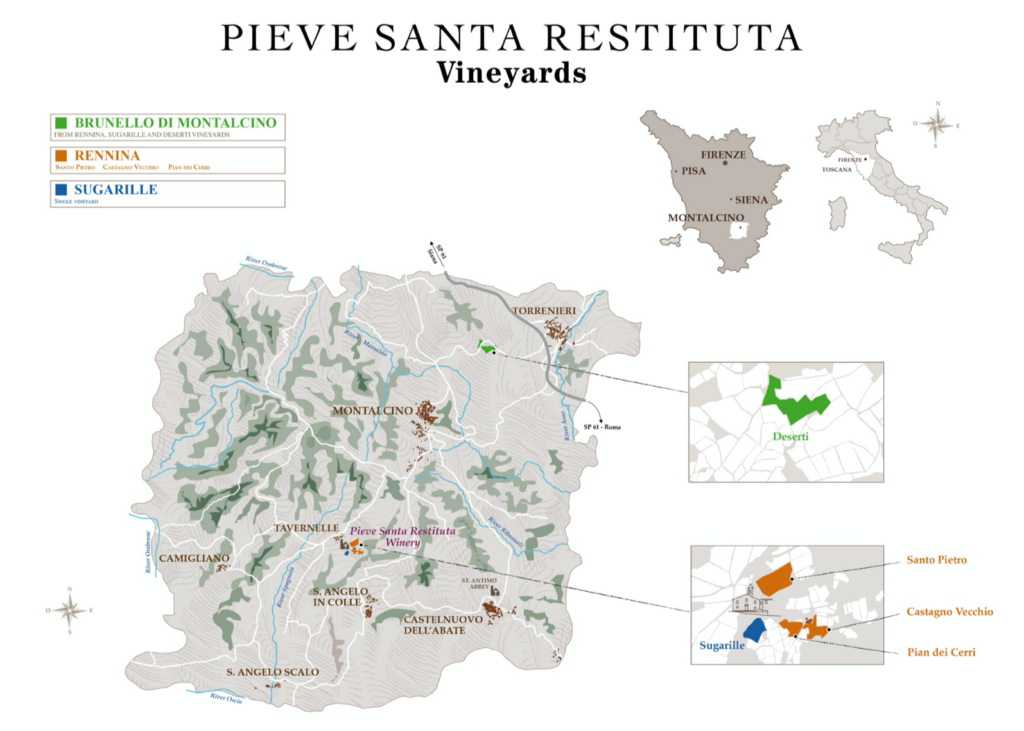
Pieve Santa Restituta is located in the Tavernelle region of Montalcino, Tuscany, and the estate showcases Gaja’s commitment to excellence in Sangiovese based wines. Acquired by Gaja in 1994 it was the family’s first expansion outside the area of Barbaresco and Barolo. The estate had 27ha of established vineyards there, and wine production dates back to the 12th century.
The Pieve (Church) on the property dates back to 462 AD. When purchased, registers were found from the monks referring to the vineyards of Rennina and Sugarille. These were very early on identified as ideal sites for wine production. The church is still consecrated and one of only three dedicated to Saint Restituta in Italy. The winery is named after this church situated in the middle of the estate, surrounded by the Rennina and Sugarille vineyards.
The first wine produced under the name Pieve Santa Restituta was in 1974 but the first vintage produced by Gaja family was in 1995. All three wines are produced at the estate – A Brunello di Montalcino blended from multiple sites and two single site expressions, Rennina and Sugarille.
THE VINEYARDS
The winery, home to their two Cru wines, Sugarille and Rennina, is located in the southwest of the appellation, at approximately 350 meters above sea level in Tavernelle. Choosing this elevation was a strategic decision, as it offers protection from spring frosts—a challenge they’ve never faced at Pieve Santa Restituta. This middle elevation also means it is low enough that is warm during the day but at night cool air drops down from the hills and there is a large diurnal temperature variation.
In 2005 the Gaja’s purchased another 9ha in the NE part of Montalcino, Torrenieri, 280m above sea level and the vineyard is known as Deserti. Here the soils are less complex, mostly clay and sand. The clay component is crucial in the soil here at this lower altitude as it helps maintain moisture in the soil.
More recently, in 2017, the Gaja’s purchased 5ha around Bolsignano, 450m above sea level, protected by woods and consists of more clay and galestro. Along with this, a second site, Passo Lume Spento, just near the town of Montalcino, 630m above sea level, was purchased in 2020. While these two vineyards are not currently producing they will be key moving forward for the estate as thye will give more robustness and the advantage of being able to adapt and use in the Brunello blend vintage to vintage. Initially, these will go into the blended Brunello di Montalcino but after a few years when the vines mature, they believe there will also be a single vineyard expression from these sites. They deliberately purchased both as they are cooler elevated sites to mitigate global warming and be able to maintain the freshness that they want to express in all the Pieve Santa Resituta wines.
WHAT IS GALESTRO LIMESTONE AND WHY IT IS AN IMPORTANT PART OF THE SUGARILLE TERROIR?
In colour, it’s a lot more yellow than you would consider more typical examples of limestone such as the Kimmeridgian soils of Chablis or say Sancerre.
“The best definition I can find for galestro is that penned by wine writer and Tuscan wine expert Monty Waldin as “a rock formation of stone (mudstone or clay but not compact clay) and sand which will become clay, but has not yet reached the full clay stage.
Luca Bellingardi of the Villa Poggio Salvi estate in Montalcino told me “in Montalcino mainly it is rocky soil, a typical rock called galestro, which is dusty and very dry. This is a soil that seems quite hard, but it’s actually very soft. In fact, you can break it easily if you snap it in two. For this reason the vine roots can easily go down in the soil to find water, and this gives a lot of minerality to the wine. This extreme soil is not suited to all plants which find it not an easy way to grow, but for the vineyards it’s very good soil. The vines sometimes have to struggle a bit.
Jan Erbach of Pian dell’Orino in Montalcino told me ‘galestro is another type of calcaric sediment and is like schist. The schist in Montalcino was created in a very deep sea which is now the Mediterranean. As this sea was so deep it had cool temperatures. The greater pressure at these depths means there was less marine life and only a very slow sedimentation of the calcareousparticles” – credit to all notes above on Galestro from Monty Waldon – Tuscan wine expert.
WINEMAKING
Winemaking across the three wines is essentially the same, just some differences in elevage. They employ cool, chilled ferments utilising whole berries and some whole bunch. The ferments are kept to around 24-25 degrees. Stem usage is carefully managed as to avoid any green flavours in the wine, the key advantage to stem usage is they can reduce final alcohol by volume in a wine by up to 1%. Across a vintage they have 40-45 different ferment in the winery, so blending is key in the final wine.
Sugarille is the first to be harvested and Rennina the last. Ferments are started wild using a pied de cuvee and if needed inoculated in order to finish the primary ferment. They believe positive results are attained from natural yeast but healthy, strong ferments are a necessity, they are not dogmatic or extremists about it and will do what they have to too achieve the best results in the final wine. Ferment takes around 10 days to complete then stay on skins for around 20 days after that.
The wine is then drained off…they do not press. They only keep the ‘flower’ to use in their wine, the last 10-20% of pressed wine is not utilised in Pieve Santa Restituta wines. This is done to maintain purity and freshness. Malolactic fermentation occurs in wood, starting naturally and when the first wine starts, some of the lees from it are used to start the other barrels. The aim is to get malolactic to finish before winter and after going through malolactic a small dose of sulphur is added. After elevage the wines undergo a very light filtering prior to bottling.
2019 Pieve Santa Restituta Brunello di Montalcino
This wine was first produced in 2005 and is a blend of all the vineyards, currently utilising the 9ha of Deserti and a small amount of Rennina and Sugarille. They use cool, chilled ferments utilising whole berries and some whole-bunch. Stem usage is carefully managed as to avoid any green flavours in the wine. The key advantage to stem usage is they can reduce final alcohol by volume in a wine by up to 1%.
They only keep the ‘flower’ of the ferment for their wines, just the juice that is drained off. The last 10 to 20% of the volume making up the pressed wine are not used at all for the wines of Pieve Santa Restituta.
The elevage however for this wine is a little different to the other two single site wines. After primary ferment is completed the wine spends the first six months of its life in 2yr or older French oak Tonneau, no new oak is used for any of the wines. After this period the wine is moved to large format oak Botti for the remainder of the two years required by the DOCG rules.
Then the wine is moved to concrete for 6-12 months before it is bottled. This wine is the introduction to their Brunello’s, a little fleshier in fruit and softer in tannin and designed to be an earlier drinking style and approachable on release.
2019 Pieve Santa Restituta Rennina Brunello di Montalcino
While released as a site specific bottling, it’s not a single vineyard wine. It’s is in fact a blend of three non-adjacent vineyards that surround the winery consisting of San Pietro, Pian Dei Cerri and Castagno Vecchio. The vineyard expositions vary from North West (Pain Dei Cerri) and the South facing sites of Santa Pietro & Castagno Vecchio. This is a key difference to their other single vineyard bottling of Sugarille which is almost entirely South facing.
First produced in 1994 from a total 10 hectares however, the majority of the vines were re-planted in 1997 and a smaller part more recently in 2005. In terms of soil types in comparison to Sugarille these 3 distinct vineyards that make up Rennina have a blend of higher clay content and richer in stones. A ‘fresher soil’ as Gaja describe vs the very poor/free draining soils of Sugarille.
A little more fruit forward than the Sugarille, the family describe it as their parallel to Barbaresco, with Sugarille being the ‘Barolo’. The name Rennina pays homage and reference to the history of the estate and is a blend of Latin and Etruscan words and indicates parish or church owned land. The wine is not produced every year and if not released as Rennina, will go into the Brunello di Montalcino.
The major difference in winemaking here from the estate/blended Brunello is after ferment the wine goes straight into larger format 3000 ltr old oak for the full elevage.
“The 2019 Brunello di Montalcino Rennina pulls the taster down to the earth with a beguiling blend of crushed ashen stones and grilled herbs, giving way to red plums and violet pastille. It sweeps across the palate with silky textures yet possesses a wiry framework that adds a sultry character. Salty mineral tones complicate its tart red berry fruits. Edgy tannins collect toward the close, inflected by orange hints and a pleasantly bitter tinge that lingers on and on. Currently, the Rennina is all elbows and knees, yet I’m very excited to see where this distinctly savory Brunello is headed.”
2019 Pieve Santa Restituta Sugarille Brunello di Montalcino
This is 4.5ha single vineyard wine from an exclusively South facing site. Note Rennina, the ’Sister’ wine to Sugarille is a blend of three non-adjacent vineyards that surround the winery consisting of San Pietro, Pian Dei Cerri and Castagno Vecchio and has a varying exposition including a NW facing vineyard. Sugarille was gradually replanted from 1996 and 1997 after purchase of the site.
The soil of Sugarille consists mainly of Marl, Clay & Galestro limestone which Gaja describe as being very poor soils (good in this case for the production of Brunello) with great drainage.
If Rennina is the ‘Barbaresco’, this is the Barolo of the pair.. Sugarille exudes elegance and richness with a heightened floral complexity, minerality and well-integrated tannin, known for its remarkable aging potential and as the more austere of the two.
Elevage is the same as Rennina and first produced by the Gaja’s in 1995. Again it will not be produced in every vintage if they deem the typicity of the vineyard is not showcased, it will then be moved into the blended Brunello. The major difference in winemaking here from the estate/blended Brunello is after ferment the wine goes straight into larger format 3000 ltr old oak for the full elevage.
The name is derived from the name originally given to parish estate dating back to 1547 and is now the name of the wine and the single vineyard.
“The 2019 Brunello di Montalcino Sugarille is dark and youthfully inward, forcing the taster to work with its brooding blend of blackberries, sage and crushed stone. This displays textures of pure silk, polished and refined, with a dense textural wave of tart red and black fruits underscored by saline minerals and exotic spice. Orange notes add contrast through the close as this finishes tannic and long, with a pleasantly chewy sensation and angular tannins that pinch the cheeks. The 2019 is a dark stallion of a Brunello, all muscle and meat, that will take many years of cellaring to show its best. That said, it will be worth the wait”
IDDA – Etna
A partnership between Angelo Gaja and Alberto Graci which begun in 2016 on the east coast of Sicily. Etna is one of the most valued and in vogue regions for unique and terroir expressive wines. The Gaja and Graci families own 20 hectares of vineyards, between 600m and 800m above sea level, in the village of Belpasso and Biancavilla.
IDDA
IDDA means ‘she’ in the Sicilian dialect which is a term of endearment and awe which Sicilian’s refer to her, being Etna.
HOW IT ALL BEGAN
Angelo Gaja’s interest in the region of Mount Etna began when his friend Giacomo Tachis first introduced him to these wines in the late 1990’s. Giacomo Tachis is the oenologist who worked with Piero Antinori creating Sassicaia, Tignanello and Solaia. At that time Angelo had his hands full with the development of Pieve Santa Resistuta in Brunello and their Bolgheri winery Ca’Marcanda.
Fast forward to present times Angelo Gaja met Alberto Graci in 2015. Alberto Graci owns one of the most respected wineries on Mount Etna, situated on the North Eastern slopes of the mountain, in Passopisciaro. With the realisation of how well aligned the two families were both in terms of the values and approach to wine production they decided to form a joint venture, IDDA, at the end of 2016.
The first vintage of IDDA Rosso came in 2017, followed by the introduction of IDDA Bianco from 2018.
“I believe that old age starts when the regrets are more than the dreams and Etna was something that I have been feeling under the skin for some time. The project is just beginning and it will move forward according to the nature of the wine; however Etna, like Langhe, is a place where elegant, enigmatic and intriguing wines can be made. I also took into consideration the challenges of climate change; indeed, I find it important the fact that Etna has the highest vineyards in Europe and the harvest period is among the latest on the continent”
Angelo Gaja
“Angelo and I share the same interpretation of Etna, and we will work hard to realize that interpretation. We are looking for elegance and electricity. Very few places on earth can make wines with those qualities, and Etna is one of them. We approach this venture with humility because we recognize that Etna is stronger than everything, and everyone else. Etna will dictate the identity of the wine we make and we will follow. We will follow the volcano”
Alberto Graci
THE WINERY + PARTNERSHIP
For the initial vintages, the wines were vinified at the Graci winery in the North. In 2023, the full production of IDDA was moved to the new winery built inside the Belpasso site.
With a dedicated winery now established, IDDA has it’s own exclusive winemaking and viticultural team. Gaia,Giovanni, Rossana Gaja and Alberto Graci are present throughout the year discussing with them team each vineyard and winery operation. Angelo Gaja and Alberto Graci still oversee all aspects of the winery as a true partnership.
VINEYARDS
Biancavilla – 630 to 820 meters altitude – South West facing – 15 hectares planted
This site was planted prior to IDDA being created so was purchased by the families with existing vineyards. It lies within the Etna DOP. 10 hectares of Nerello and 1 hectare of Carricante, first planted in 1975. An additional 4 hectares of Carricante was planted in 2017.
The soil here is some of the oldest in the Etna DOP, some 60,000 years old. What does this mean? Due to the soils being from a very old lava flow it’s has had a very long oxidation/weathering/decomposition period so the soils are more ‘ground down’ so to speak, small pebbles, light brown soil, not as fertile and obviously volcanic as some of the more extreme soils of Etna.
Belpasso – 600 to 620 meters altitude – South facing – 12 hectares planted
They purchased this site with only 1 hectare of Carricante already planted. It’s also where the IDDA winery has been built with the first vintage been vinified there in 2023. Prior vintages had been made at the Graci family winery in the North.
The vineyard site is in fact a natural Clos, created by diverging and converging lava flows. It’s an island of fertile land surrounded by unfarmable black volcanic rock. Very high sand content here however due to the soils being a lot younger than Biancavilla, it’s more fertile and has a much higher concentration of larger porous volcanic rocks, more typical of the Etna terroir.
The new plantings (11 hectares) are all Carricante which have been planted between 2019 and 2023.
The site sits just south of the defined border of the Etna DOP, so wines produced from here are labelled Sicila DOP, hence why the IDDA white is labelled as such as the majority of production comes from this vineyard.
Tartaraci – 970 metres altitude – South + South West facing – 5 hectares (not currently planted)
This site is on the North West slopes of Mount Etna and is the highest in terms of altitude. Exposed to the wind and colder temperatures due to altitude, it’s an extreme site for Nerello but IDDA are particularly interested in it’s potential for Carricante.
The current site contains an abandoned vineyard which IDDA are currently evaluating (Feb 2024). They are finalising Massal selection of some of these vines (Nerello Mascalese, Grenache, Carricante, Grecanico & Minnella) and will begin bringing the vineyard back to production.
2023 Idda Bianco Sicilia DOP
There is no question the Gaja family have never been ones to swim with the current, not simply to be seen as modernisers or to stand out from the crowd but to challenge the established norms in anattempt to produce the best wine possible.
In a region synonymous for quality red wine production originating from the Northern slopes of Mont Etna (Nerello Mascalese), Gaja decided to purchase both an existing vineyard and plant a new separate site on the less publicised southern slopes. All of these new plantings are Carricante, a white variety.
100% Carricante. Post picking a small parcel is left overnight on skins before pressing. 50% fermented in tank, 50% in barrel of which is a combination of 1000 ltr seasoned French oak and 5000ltr Austrian Stockinger barrels. Part of the wine goes through malolactic. The total elevage is 8 months. Each plot is aged for 6 months separately, then blended and bottled 2 months later.
The first vineyard Gaja purchased is in Biancavilla and lies within in the Etna DOP boundaries and does have some old vine Carricante planted. However the second vineyard in Belpasso (where the IDDA winery has been built) is exclusively planted with Carricante but sits just outside the border of the Etna DOP. IDDA Bianco is a blend of these two vineyards. Gaja always had the plan to plant here so the wine has been labelled Bianca Sicilia since inception.
“The 2023 Bianco demands attention with a beguiling bouquet that mixes crushed rocks, sesame seeds and curry leaves with nectarines and lemon zest. This opens with a pretty inner sweetness contrasted by masses of salty minerals and zesty acidity as ripe orchard fruits cascade throughout. The 2023 tapers off dramatically, long and spicy. A sour citrus tinge forces the mouth to salivate as hints of candied lime and a tart Granny Smith apple concentration slowly fade. In a word, fantastic”
2022 Idda Etna Rosso Sicilia DOP
IDDA means ‘she’ in the Sicilian dialect, which is a term of endearment and awe which Sicilian’s refer to her, being Etna. Predominantly Nerello Mascalese with a touch of Nerello Cappuccio. This wine comes entirely from the Biancavilla vineyard which sits on the southern side of Mount Etna, south west facing slopes, between 700 and 800 meters above sea level. Vineyard as planted in 1975.
Fermented in a combination of steel and seasoned wood vessels. 25/30% whole-bunch. Pressed off to barrel. 80% of these barrels are 2000ltr & 4000ltr, French and Australian with a handful of 700ltr from the same origin. Aged separately for 9 months before then blending of the differing barrels. Bottling is done 3 months post blending.
"The 2022 Etna Rosso tempts the imagination as depths of crushed raspberry come together with rose petals, ground cloves, sage leaf and incense to form its truly captivating bouquet. This is elegant and softly contoured, with silky textures and ripe wild berry fruits that swirl throughout. A core of brilliant acidity and tactile mineral tones builds tension toward the close. It leaves a pleasantly bitter tinge to linger on while tapering off with a coating of fine tannins, hints of licorice and a sensation of liquid stone”
Place Your Order
Expression of Interest Offer
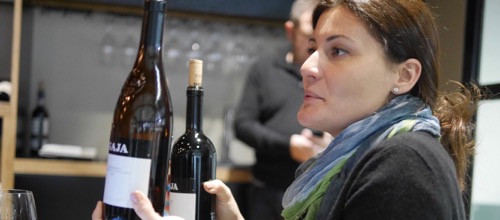








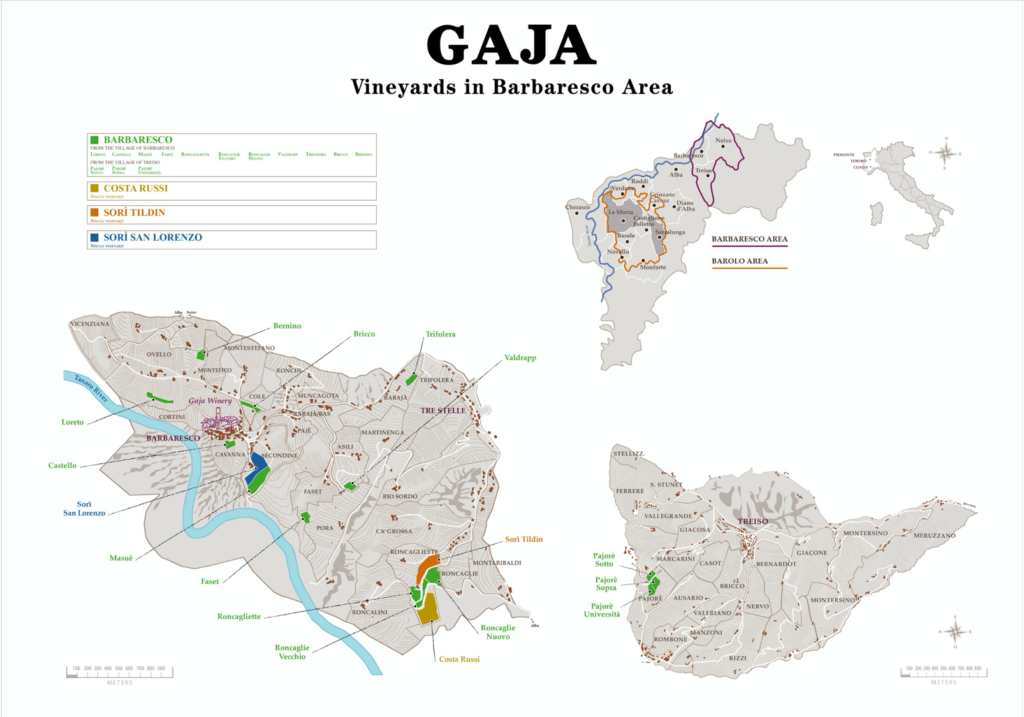

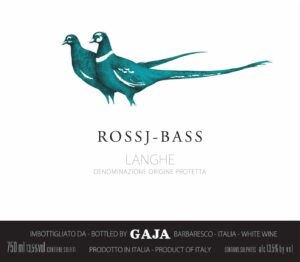
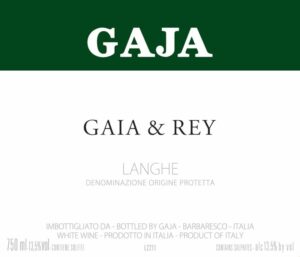
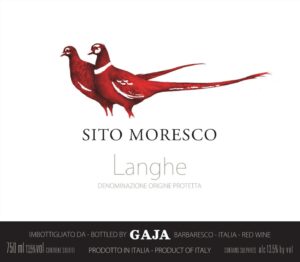

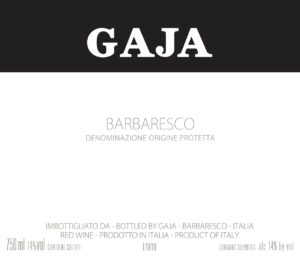
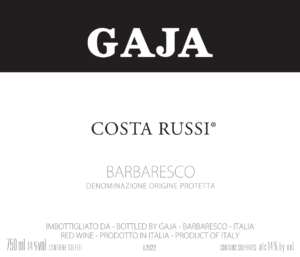
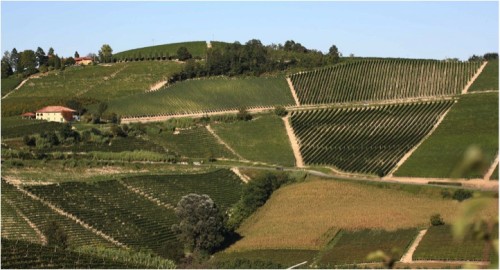
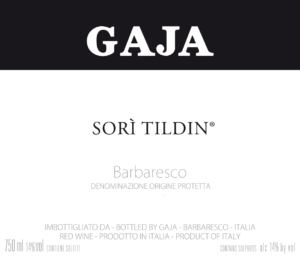
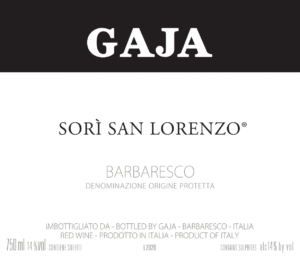
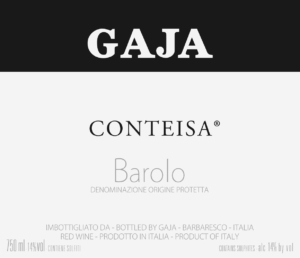
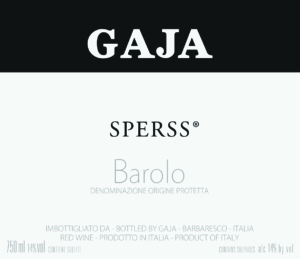
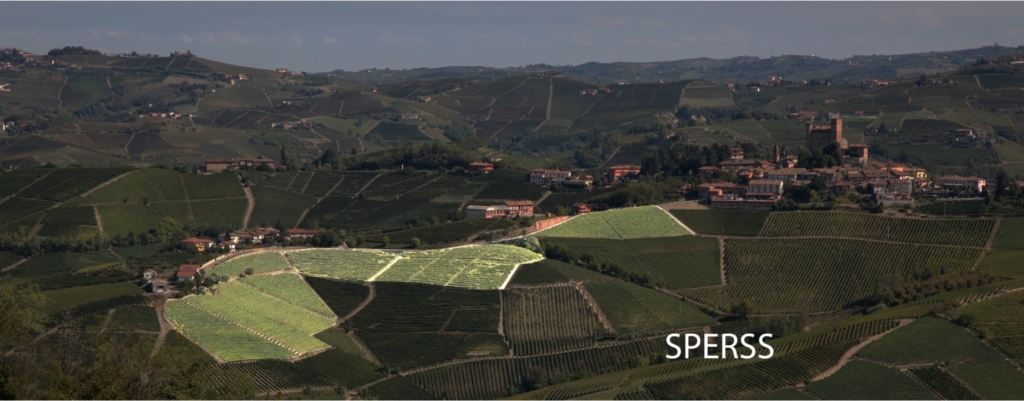
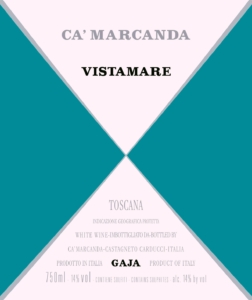
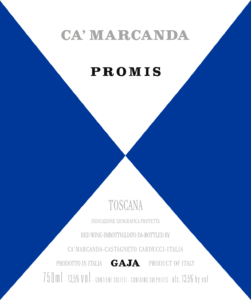
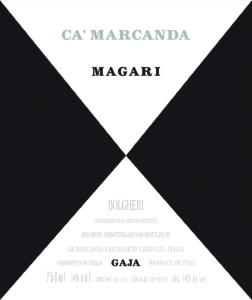
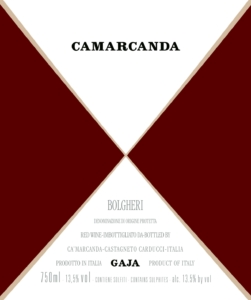



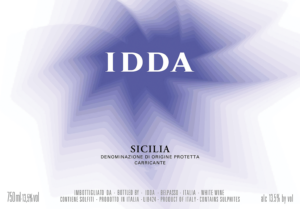
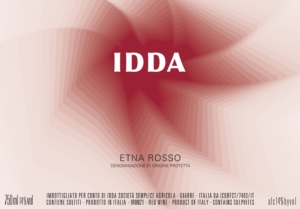
You must be logged in to post a comment.